Complete Fishing Hook Guide: Hook Sizing Chart Inside
Leave a comment after this article and let’s talk more about fishing hooks and tackle. I’d love to read your feedback.
Let’s take an in-depth look at fishing hooks. Walk down the aisles of any bait and tackle shop and you’re presented with a huge range of hooks in every shape, size, and color. It can be intimidating even for seasoned fishermen. I will help you see through the marketing hype and give you confidence in your ability to select the right hooks for your needs.
Graphic: Fishing Hook Size Chart
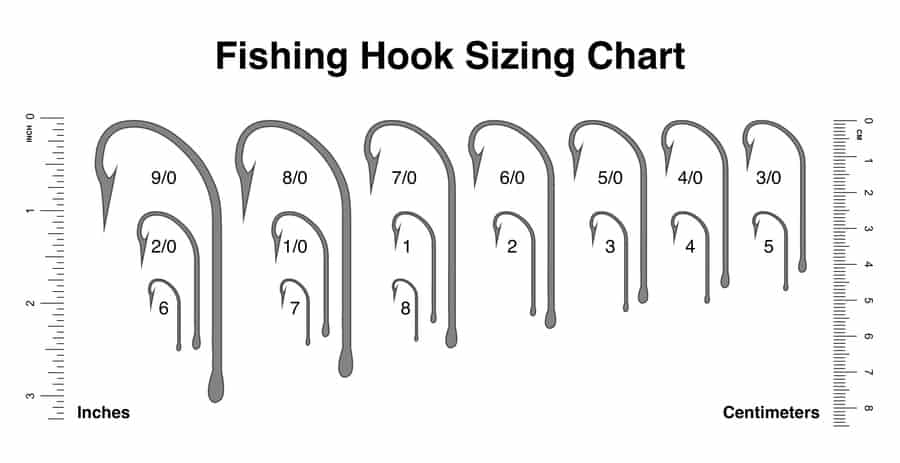
Table of Contents
Complete Guide to Freshwater Fishing Hooks
Hook Basics
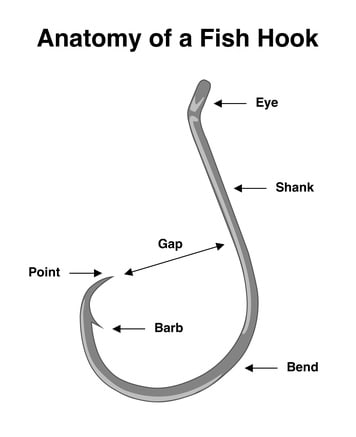
There are 5 main parts to just about any fishing hook. As you can see in the diagram to the right, these parts are the eye, the shank, the bend, the point, and the barb. Allow me to explain each of these components further.
1. Eye
The eye is where you attach your fishing line or leader to. It is the link between your line and the hook.
Some hooks like the Siwash hook actually come with an open section of the eye which allows you attach the hook on a lure.
2. Shank
The shank is the longest part of the hook (liken it to your femur bone) and provides much of the strength and backbone of the hook.
Some hooks like circle hooks have relatively short shanks whereas others like Aberdeen hooks have extremely long shanks.
3. Bend
The bend is exactly like it sounds. It is the curvature of the hook and helps produce much of the torque used to drive the point into the fish. Some hooks like the circle hook have a twisting action in the bend making the point offset from the shank.
4. Point
The point is the business end of the hook. Without the point, a hook is useless. The point is what buries itself into a fish’s lip and secures it for the duration of the fight. The point can be compared to a shark’s teeth or a boxer’s fists. It’s the business end.
5. Barb
The barb is a secondary point at angles away from the point. It is designed to keep bait and a fish’s lip firmly attached to the hook. Barbs can be problematic as they are very “sticky” by design.
They have a tendency to keep the hook stuck to fish’s lips, your shirt, your thumb, etc. Not all hooks have barbs. Some hooks are sold barbless which eliminates the damage and stickiness caused by barbs but makes it a bit tougher to keep the fish hooked for the entire fight.
There are some other fishing hook terms you need to know. The hook gap refers to the distance between the shank and the point.
The hook gauge refers to the thickness of the wire from which the hook was made from. And if a hook is offset it means the hook point is not parallel to the hook shank.
If you are interested in walleye and smallmouth bass fishing, please check out my other site Hookset Haven which goes into incredible detail on fishing for these great fish.
Fishing Hook Sizes
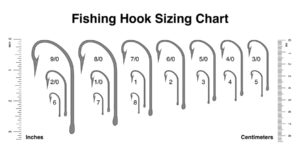
Disclaimer: Fish hook sizes are a general description, not an exact universal standard. Fishing hook brands may different sized hooks at certain sizes than other brands.
As an example, a size 6 hook by Eagle Claw may not be the exact same size as a size 6 Gamakatsu hook.
Just like how one clothing line’s medium shirt may fit like a large in another clothing line. Fishing hook sizes may not be exact, but they are roughly equivalent.
Types of Fishing Hooks & Descriptions
- Standard J-Hook
- Bait-Holder Hook
- Siwash Hook
- Aberdeen Hook
- Circle Hook
- Octopus Hook
- King Kahle Hook
- Shiner Hook
- Treble Hook
- Worm Hook
- Swim Hook
- Jig Hook
- Weedless Hook
1. Standard J-Hook
This is the simplest hook design. Shaped like the letter “J”. This hook is useful on some lures but really earns its stripes with live or cut bait. Popular for panfish with worms or small minnows.
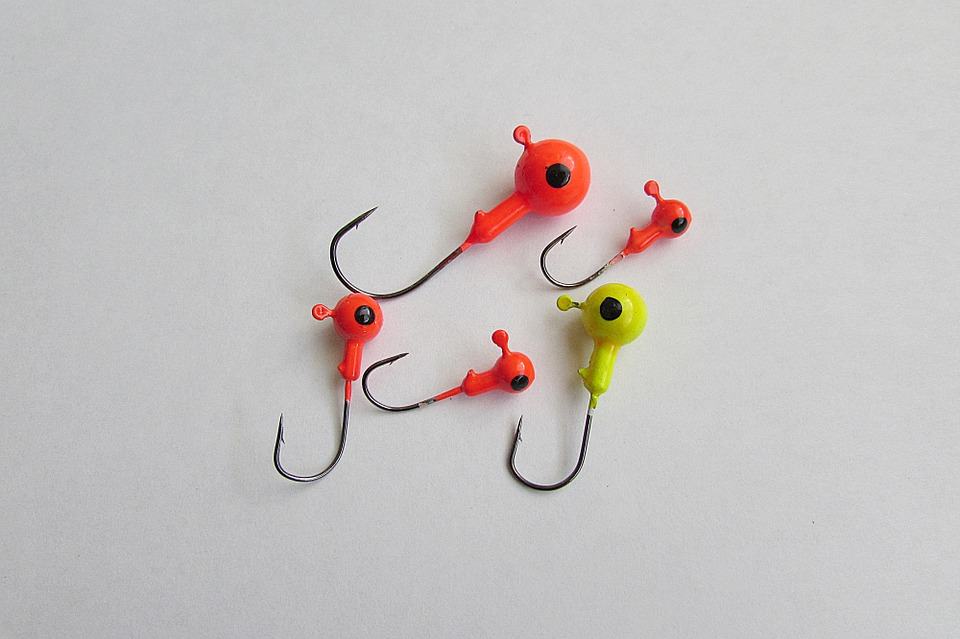
12. Jig Hook
Species Fishing Hook Guide
I’m just going to generalize the heck out of this section since there are a lot of variables that could affect hook size and type for various species. I’m just going to tell you what you really need to know.
Bass: size 5 through 4/0
Catfish: size 2 through 6/0
Bullheads: size 7 through 1
Carp: size 3 through 1
Walleye: size 3 through 2/0
Panfish: size 8 through 3
Pike: size 1/0 through 6/0
Striped Bass: size 1/0 through 4/0
Trout: size 8 through 4
Table: Circle Hook Size Chart
| Hook Size | Target Fish / Usage |
|---|---|
| #20 – #12 | Extremely small fish like panfish |
| #10 – #4 | Small to medium-sized fish; suitable for trout, perch |
| #4 – #1 | Larger freshwater fish; good for bass, catfish |
| 1/0 – 4/0 | Medium-sized gamefish; suitable for larger bass, pike, and inshore saltwater fish |
| 5/0 – 8/0 | Large gamefish; ideal for large catfish, carp, and saltwater species like snapper |
| 9/0 – 12/0 | Very large gamefish; suitable for large saltwater species like tuna, marlin |
| 13/0 and up | Extremely large and heavy fish; deep sea fishing |
Remember, the “0” sizing (like 1/0, 2/0, etc.) indicates larger sizes as the number increases. Sizes without the “0” (like #1, #2, etc.) get smaller as the number increases. The choice of hook size also depends on bait size, fishing method, and the species you’re targeting. Smaller hooks are often used for a more natural bait presentation, while larger hooks are necessary for larger fish with bigger mouths.
Table: Treble Hook Size Chart
| Hook Size | Target Fish / Usage |
|---|---|
| #18 – #12 | Very small fish, like panfish; often used on small lures |
| #10 – #6 | Small to medium-sized fish; suitable for trout, perch, and smaller crankbaits or spinners |
| #6 – #2 | Medium-sized freshwater fish; good for larger trout, bass, and walleye; common in medium-sized lures |
| 1/0 – 3/0 | Larger freshwater fish; suitable for pike, larger bass; used on larger lures and plugs |
| 4/0 – 7/0 | Large gamefish; ideal for muskellunge, catfish, and some saltwater species |
| 8/0 – 12/0 | Very large gamefish; used in big saltwater lures for species like tuna, marlin |
Treble hooks are typically used on lures such as crankbaits, spoons, and spinners. They have three points, offering a higher chance of hooking a fish that strikes the lure. When choosing a treble hook size, consider the size of your lure and the species of fish you’re targeting.
Fishing with Bait: Circle Hooks vs. Bait Hooks
There is a growing debate between the use of circle hooks vs. the use of standard bait hooks. Both hook types have their benefits as well as their share of drawbacks. Let’s take a closer look so you can decide which type of hook would be best for you.
Circle hooks are growing in popularity among recreational and commercial fishermen for their effectiveness and reliable hook set.
Circle hooks are specially designed hooks for live and cut bait that have a uniquely twisted shank and design. These hooks are designed to twist into a fish’s lip and almost always result in a secured corner-of-the-mouth hookup.
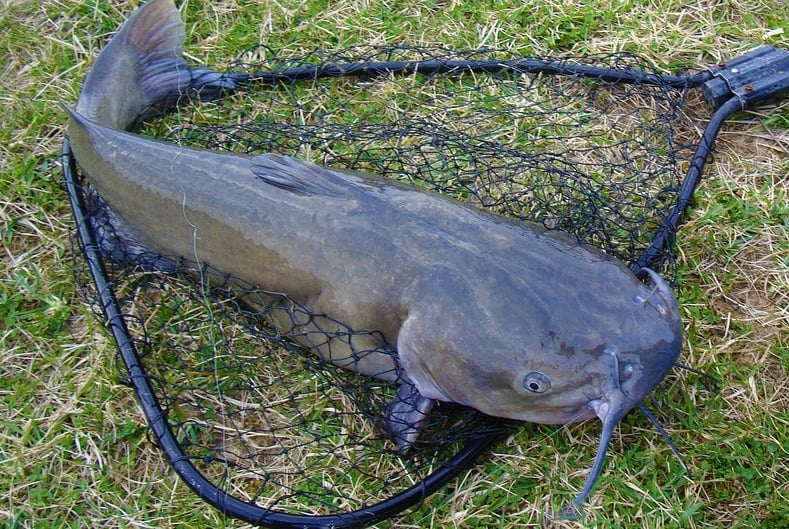
The key to using a circle hook is to not set the hook. Instead, let the fish grab the bait and once the rod tip bends down for more than 1 second, with your rod still in the rod holder, begin to reel the line until the rod bends fully over. At this point, the hook is firmly stuck in the fish’s mouth and you can begin to fight the fish.
This process takes all the guesswork out of setting the hook. The fish essentially sets its own hook. Furthermore, the hook almost always implants into the corner of the mouth where it will cause the least amount of damage to the fish.
Another key benefit to using circle hooks is since the hook is twisted, it will twist into the fish’s mouth. In order to extract the hook, you need to twist the hook out of the puncture hole. This means you can pinch your barbs on your circle hooks and not lose any fish.
It is very unlikely a fish will twist its body in such a way that it completely twists the hook out. This makes barbless circle hooks great options in waterways where barbed hooks are restricted.
Bait hooks, on the other hand, must be set by the fisherman. They are designed in a j-hook shape and a solid hook set is needed in order to drive the point in.
This hook is great for fishing live and cut bait as the barbs on the shank allow it to better grip bait and keep it from sliding around on the hook.
This is especially important as a key reason for missed hooksets and even worse, gut-hooked fish, is the hook sliding around and penetrating back into the flesh of the bait. Those 2-3 additional barbs on the shank of the bait hooks keep your bait nice and snug.
The downside to bait hook is that a hook set is required. This means that there are a number of ways you can mess this up.
You could set too hard, too soft, too early, too late. You could injure the fish in various ways or not hook the fish at all. Another huge issue is the randomness of where the hook gets embedded in the fish’s mouth.
Unlike circle hooks which usually embed in the corner of the mouth, a bait hook can embed literally anywhere. You could end up with a lot of throat and even gut-hooked fish since most fish devour live bait.
How to Properly Attach Bait to a Hook
When attaching bait to a hook, make sure the bait is as secure as possible. This will keep your bait from flying off the hook during the cast. It is important the point does not turn back into the bait as this will cover up the point and prevent good hook sets.
Failing to account for this will result in fewer hookups and more gut-hooked fish. Also if using live or cut baitfish, ensure there are no scales on the hook point where casting as even a single scale covering the point could prevent a solid hookset.
What About All the Hook Colors?
You’ll see a whole range of colors fishing hooks come in. Blue, red, orange, black, silver, gold, and bronze. Red hooks are popular for trout. I’m sure each colored hook serves a purpose but I’m a firm believer in black and bronze hooks. I think they are the hardest for fish to detect.
That’s all I have on the topic of color. Nothing too complicated.
What about Snelled Hooks
Snelled fishing hooks are basically prepared hooks with monofilament line already attached. Improperly tied knots are a key reason for lost fish. Snelled hooks eliminate the knot-to-hook connection by wrapping a monofilament line through the eye of the hook and around the shank. The line ultimately culminates a few inches away with a tied loop where you can either attach your swivel or tie your line to.
Snelled hooks offer no more value other than they eliminate the risk of you improperly tying the wrong knot to the hook. Yes, you still need to tie your line to the prepared loop but line-on-line is a lot more forgiving than line-on-metal. Snelled hooks are also a lot easier for children to use.
To Barb or Not to Barb
Most fishing hooks come with barbs. Barbs are designed to increase the “stickiness” of the hook. This means after the point penetrates the flesh of the fish, the barb is designed to create a second point against which it is difficult to remove. The barb makes the hook sticky and helps to keep fighting fish attached to the hook.
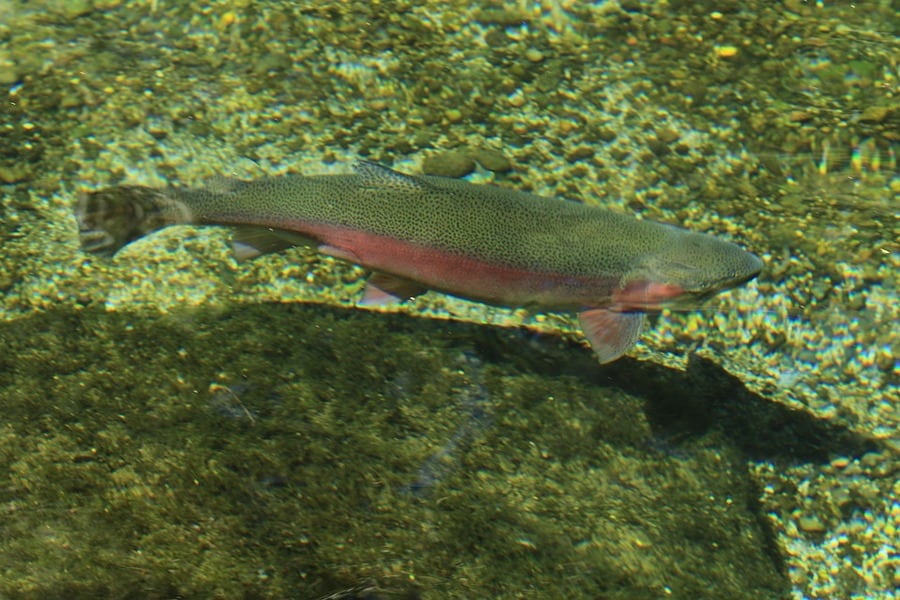
Barbs are not all wonderful, however. Barbs cause damage to the fish when you are removing the hook. They can result in further flesh damage. They also make removing hooks more difficult for you.
This can be dangerous if you are struggling with a hook inside the mouth of a toothy predator like a pike. Because barbs do cause excess damage to fish, many waterways are designated as “barbless hooks only”.
You can buy hooks that come barbless or you could simply pinch down the barbs with a pair of pliers making the barbed edge essentially smooth. The downside to going barbless is your hook loses its stickiness. Fish are more likely to come off your hook while fighting it.
To prevent this from happening, never allow any slack in your line while fighting the fish. Slackline allows the hook to go loose and potentially slide out of the hole. By keeping constant tension on the line, the hook will not have an opportunity to slide out.
One great way to use barbless hooks and not lose fish if you are using live or cut bait is with a circle hook.
Circle hooks are twisted so they are designed to twist into the fish’s mouth. In order to remove the hook, you need to screw the hook out of the hole. It is very unlikely a fish will recreate this motion exactly while fighting you.
This means a barbless circle hook will work great at keeping a fish on the line even if you allow slack. I would even recommend you pinch the barbs down on your circle hooks since barbs can make the removal of a circle hook very difficult for you.
Hook Costs
The price of fishing hooks can determine the level of quality you are able to use. You get what you pay for. With fishing hooks, this age-old law is even truer.
Good hooks have a sharp quality point. Quality hooks are strong but provide some flexibility allowing the hook to bend without molding or breaking.
Some great premium brands of fishing hooks are Owner, Mustad, and Gamakatsu. These hooks will cost a bit more but are of great quality. Some other brands readily available at any department store or bait shop are of lower quality but are much more affordable.
If you are just messing around fishing for small trout and panfish with kids, just go with some of these cheaper hooks. If you plan on fighting big fish like catfish, pike, and salmon, invest in some great hooks
Remember that hooks are more important to success than rods and reels. They are even more important than fishing line. A failure of the hook is a loss of a good fish. Fishing line can be incredibly important too.
Setting the Hook
The purpose of setting the hook is to drive your hook into the lip or jaw of a fish to secure it your bait long enough for you to catch the fish.
Believe it or not, there is not one-size-fits-all approach to hook setting. Type of hook, species of fish, and angle of attack dictate the types of hook set needed.
When fishing with a j-hook, a solid hook set is needed. Once you feel a bite, reel in the slack line and then punch the rod tip up at a 45-degree angle. Remember that fish like pike, gar, and bass with harder mouths and sharper teeth require hard hook sets to drive home the hook.
Fish with softer mouths like trout, panfish, and catfish require much less force. In fact, set the hook too hard and you could tear the hook right out of the fish’s mouth. The force required also depends on the sharpness of the hook. Sharper hooks require less force to penetrate than dull hooks do. Use the sharpest hook you can afford.
Circle hooks, unlike j-hooks, do not require a hook set. In fact, setting the hook on a circle hook could cause you to miss the fish entirely or foul-hook them. Instead, take a more passive approach to setting a circle hook.
Watch your rod tip carefully. When it bends over for more than a second, crank the handle of your reel a couple times until the rod fully bends over. Now the fish is on the hook and you can pop your rod out of the holder and start fighting the fish.
Diagnosing Hook-Related Causes for Losing Fish
Bites but no Hook-Sets
This means you are likely using baits and/or hooks that are too big for the mouths of the fish which are biting. Your bait is simply too large for the fish to grab enough for a solid hook set.
Your bait of choice is clearly enticing bites but you now need to downsize everything. Progressively present smaller and smaller bait and hook sizes until those bites turn into solid hook sets. If you’re using a full nightcrawler and a size 1 hook, cut the worm in half and try a 2/0 hook.
Hook Pops Out as You’re Putting Max Strain on the Line While Fighting Fish
This one should seem clear. You put too much strain on the hook and it tore it out the fish’s mouth or lip. You over-fought the fish and were too aggressive. There are 3 primary causes for hooks to tear out.
The first is that you were simply too eager and abrasive while fighting the fish. The second is that your drag was set too strong which didn’t provide enough give to keep the hook at a safer tension point.
The third cause is your hook was too small (the gap of the hook was too small) for the fish you were fighting. Larger hooks are less likely to be torn out than hooks too small for a fish’s mouth.
Fish are Spitting the Hook
If you feel the tension on the line and suddenly, the hook is free and the fish swims off, this is a case of the fish “spitting” or throwing your hook.
Fish can’t spit your hook if it’s embedded in their lip. It’s either in or it’s not. A fish can realize there is a hook attached to the bait and force it out of their hook without being hooked.
In this case, you have an issue with your hook sets. To improve your hook rate, use a sharper hook than you are currently using. You can also take a look at your hook-setting technique. These are the two primary reasons you are not hooking these fish.
What are Snagging Hooks?
Snagging hooks are a special kind of weighted-treble hook designed to snag a fish as it swims by. The most popular American situation requiring snagging hooks is to snag river-run salmon as they swim upstream to spawn.
When I was a kid, my father would take me and my grandfather to Pulaski, NY to go catch salmon on the Salmon River. King salmon would run upstream from Lake Ontario to their spawning grounds.
On the way, they’d have to run the gauntlet swimming within feet and even inches of countless wading fishermen slamming weighted-snagging hooks at them hoping to strike their sides.
Snagging hooks are necessary to catch these salmon since the salmon largely stop feeding once they hit the river. There is almost no other way to catch them aside from using nets. Snagging hooks, at least the ones I’m familiar with, are large treble hooks with a casted lead or metal mid-section.
These hooks are designed to be heavy enough to strike a fish with force through running water but light enough they can be deployed rapidly.
I’m not an expert on the laws regarding the use of snagging hooks so I would strongly advise you check your state laws before even considering them. Remember, there is no catch-and-release when it comes to snagging fish with these hooks.
Fequently Asked Questions
What is the best hook size for trout?
The ideal hook size for trout varies depending on the type of trout and fishing technique. Generally, for smaller trout, a hook size between 10 and 14 is recommended, while larger trout may require a size 6 or 8. It’s important to consider the fish’s mouth size and the type of bait being used for optimal hook size selection.
What is a size 10 hook good for?
A size 10 hook is a common choice among anglers due to its versatility and effectiveness. This hook size is suitable for various types of fishing, including freshwater fishing for trout, panfish, and walleye. It is most commonly used for catching small to medium-sized fish, making it a staple in many tackle boxes.
Worm Hook Size Chart
A worm hook size chart is a helpful tool for anglers to determine the appropriate hook size for fishing with worms. It displays the recommended hook sizes based on the length and thickness of the worm being used. This chart ensures that the hook is properly matched to the bait.
| Hook Size | Typical Use / Target Fish |
|---|---|
| #10 – #6 | Small finesse worms, suitable for panfish, small bass |
| #4 – #2 | Standard size for smaller soft plastics, good for medium-sized bass and similar freshwater species |
| 1/0 – 2/0 | Common size for a variety of soft plastic baits; versatile for bass fishing |
| 3/0 – 4/0 | Ideal for 5-7 inch worms, larger soft plastics; used for bass and similar-sized gamefish |
| 5/0 – 6/0 | Large soft plastics, such as 8-10 inch worms or big creature baits; suitable for large bass, pike |
| 7/0 – 8/0 | Extra-large soft plastics; used for targeting trophy-sized bass or larger predatory fish |
Worm hooks are specifically designed for soft plastic baits, often used in bass fishing. They come in various shapes, like wide-gap, extra wide-gap (EWG), and straight shank, to accommodate different bait types and fishing techniques.
Fly Fishing Hook Size Chart
| Hook Size | Typical Use / Target Fish |
|---|---|
| #32 – #28 | Extremely small flies for very small fish or challenging conditions |
| #24 – #20 | Small midges and tiny dry flies for trout and other small fish |
| #18 – #16 | Common sizes for a variety of small nymphs, dry flies, and wet flies; used for trout and panfish |
| #14 – #12 | Standard sizes for a wide range of fly patterns, including nymphs, dries, and wets; versatile for trout, panfish |
| #10 – #8 | Larger nymphs, wet flies, and small streamers; suitable for larger trout, small bass |
| #6 – #4 | Streamers, larger nymphs, and wet flies; used for bass, larger trout, and small saltwater species |
| #2 – 1/0 | Large streamers and saltwater flies; targeting species like pike, larger bass, and inshore saltwater fish |
| 2/0 – 4/0 | Very large flies for pike, muskie, large saltwater species like tarpon |

I was hoping to see a chart with every hook size because I’m looking for a very small hook to use catching sculpins on the White River in Arkansas. They are the go-to bait for fishing for larger German Brown trout. You chart isn’t quite complete as I require but you’ve got a really great site with a wealth of information on the various type hooks and applications. Thanks, Greg